 FEATURE
FEATURE
 Photography BY Wes Allison
Photography BY Wes Allisonom Schauppner’s roots into hot rodding dig way back to the mid ’60s when he was a self-described 15-year-old hellraiser. “Starting out in Huntington Park, we eventually moved to Newport Beach, California, in 1961. Just about every teenager in my neighborhood had a hot rod of some sort. My buddy, Tom Hargraves, got me into cars. He had a ’57 Chevy and I’d help him wrench on it until I got a cool hot rod of my own—a ’55 Chevy I bought without telling my parents,” Tom reveals. “The deal was short-lived, though, as my parents weren’t big on me having a car like that at the time, so my dad made me sell it back the next day.”
Not one to give up easily, Tom bought a ’56 Chevy from a friend not too long after, only this time he rented a garage a few miles away in Costa Mesa to work on the car without his parents’ knowledge. Eventually, his dad found out about the car once it was revealed Tom was carrying a zero balance in his bank account. “My dad figured out where the money went, and surprising to me, told me to bring the car home and then helped me finish it,” Tom says. “I raced it on weekends and every chance I could, but that reckless behavior drove my mom crazy as she was totally against the whole thing.” Ironically, Tom’s car got a lot of attention around town and at dragstrips like Lions, Fontana, and others, which led to his car making the cover of the Apr. ’65 issue of Popular Hot Rodding magazine.

Around 1988 Tom would drive by a mechanic’s lot in Whittier on his way to work every day and noticed a tarp covering a car with a familiar shape along with a partial taillight being visible—just enough so that Tom could tell it was a ’56 Chevy. Each day as he drove by for about a year, that dull taillight was more like a beacon of light, never failing to get his attention. Finally, Tom couldn’t take it any longer and stopped by the shop to inquire about the car. The owner told Tom he was just about to put it up for sale at the Pomona swap meet that next weekend. Not about to let it go, Tom offered him $800—tarp and all. Tom was back in the hot-rodding game!
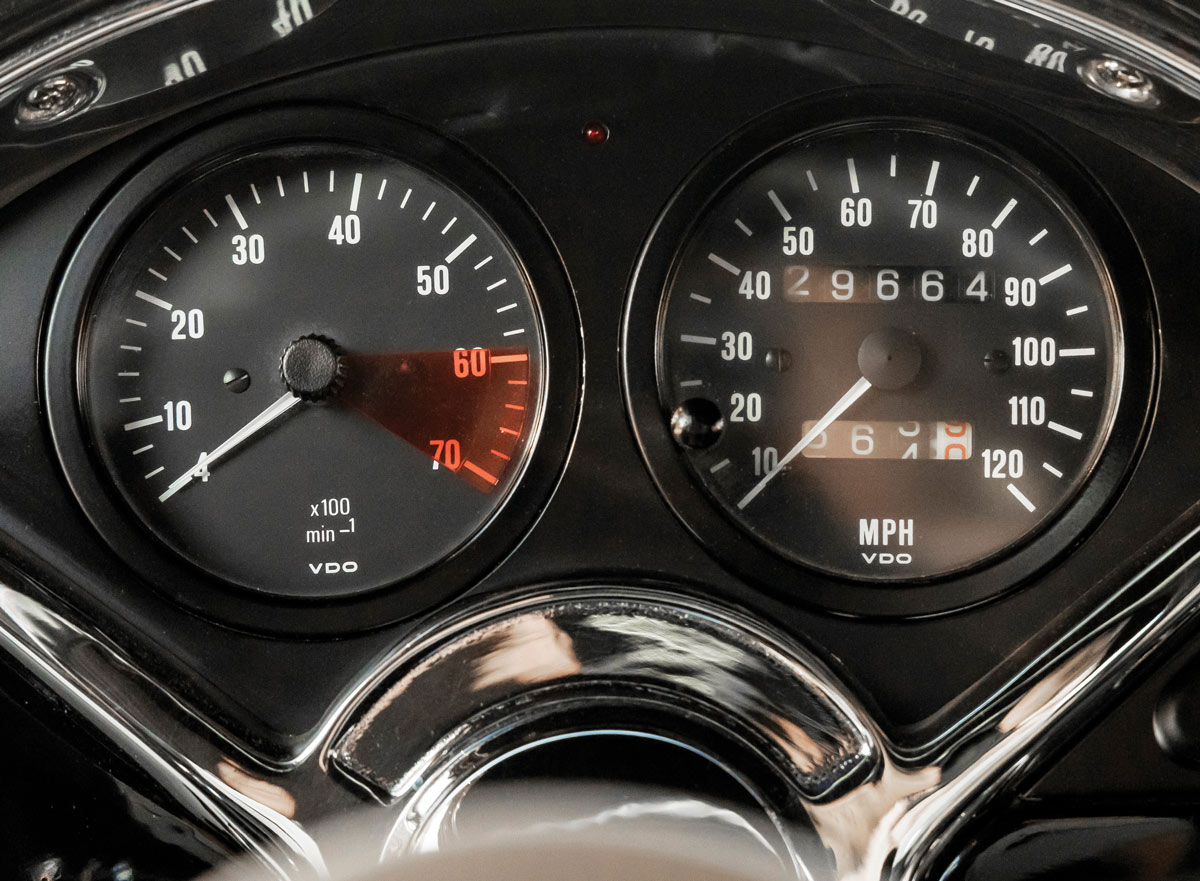
For approximately three years Ebberoth and Tom spoke weekly to collaborate on the build direction and to come up with ideas on all the custom nuances that would be incorporated into the Bel Air. In 1990, Tom saw the car in person for the first time and was blown away by the outcome. With the ’56 on the road it received numerous show awards, magazine features, and took First Place in Car Craft magazine’s Real Street Eliminator competition.

Power comes by way of a 460ci big-block built in 2011 by John Mooreland at C&J Engineering. The refreshed mill’s drivetrain consists of a Scat forged crank, H-beam rods, and CP custom forged 10.5:1 compression pistons. The Edelbrock Performer RPM aluminum heads provide plenty of flow while a Comp Cams hydraulic roller cam conducts the process. A C&J-modified Holley 800-cfm carb sits atop an Edelbrock Air-Gap intake with waste exiting through custom headers and 2½-inch exhaust by Frank Shonig.
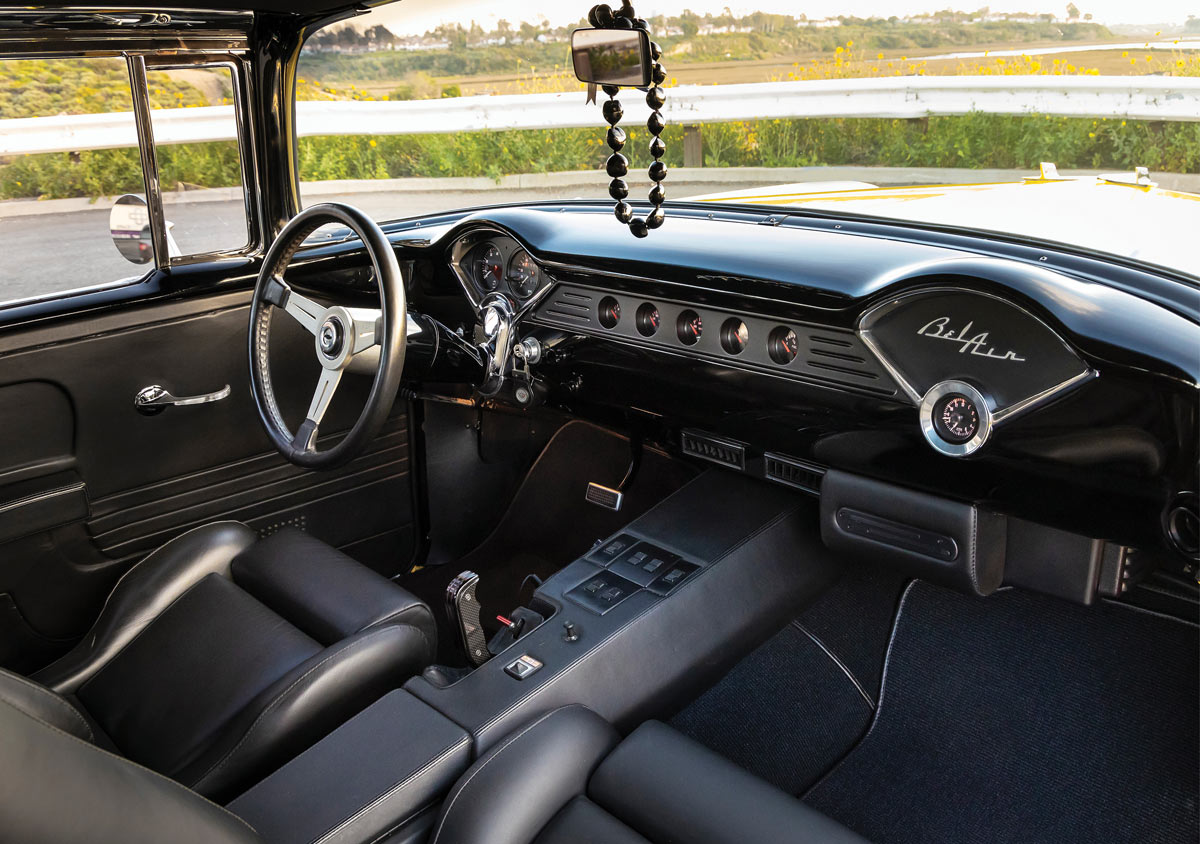
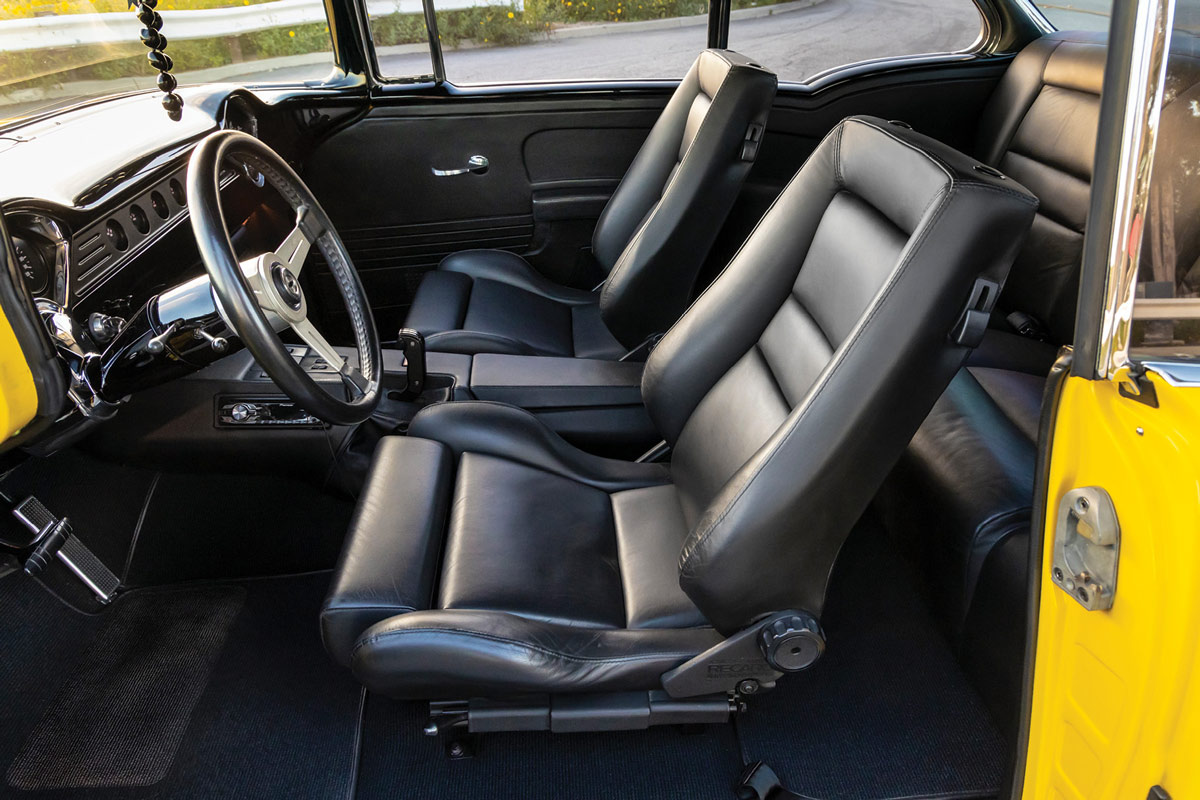
Ebberoth boxed the stock frame for a stiffer, performance-based ride, and built a custom crossmember to accommodate the Orange County Transmissions 700-R4 transmission. Out back is a Currie 9-inch rearend stuffed with an Eaton limited-slip posi unit and 3.50 gears. Shonig set focus on building the stainless four-link suspension system dampened by Ridetech shocks. Up front, Ebberoth worked in a set of NASCAR-style tubular control arms for additional strength and performance, also dampened with Ridetech coilover shocks.
Corvette 12-inch disc brakes work with an ABS hydraulic master cylinder to pull the Bel Air down from speed and lurk behind a set of 15-inch Budnik Famosa custom knock-off wheels sheathed in, of course, BFGoodrich T/A radials.
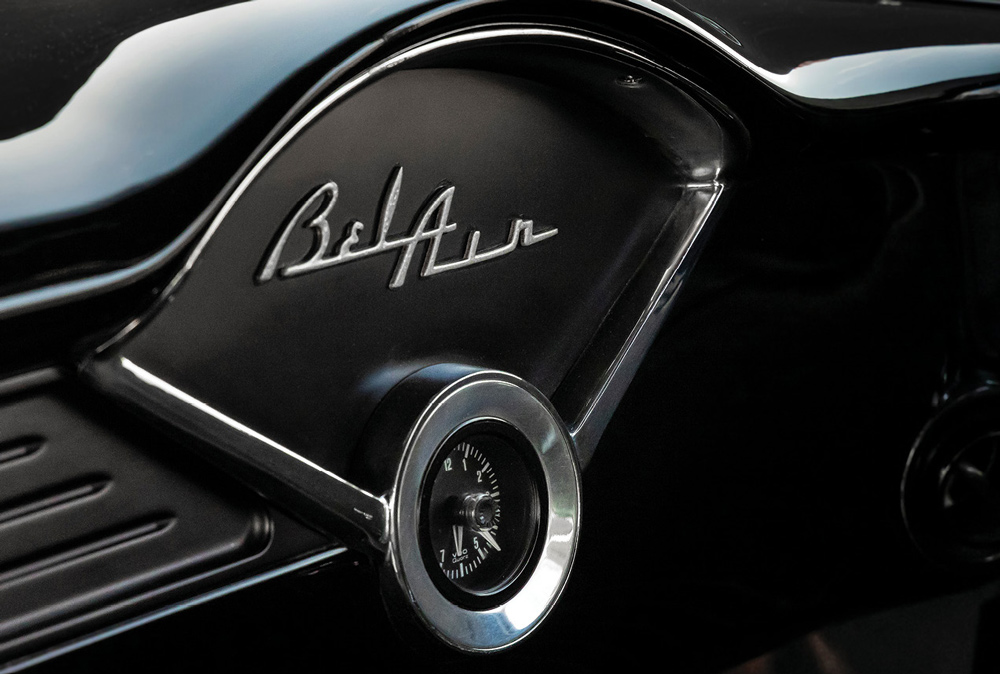
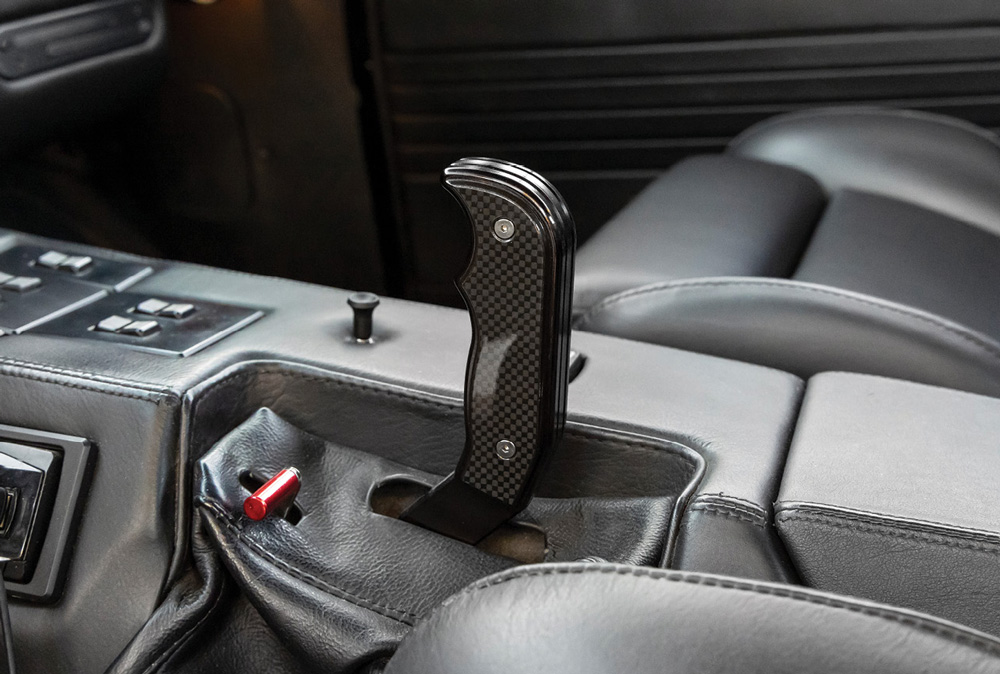
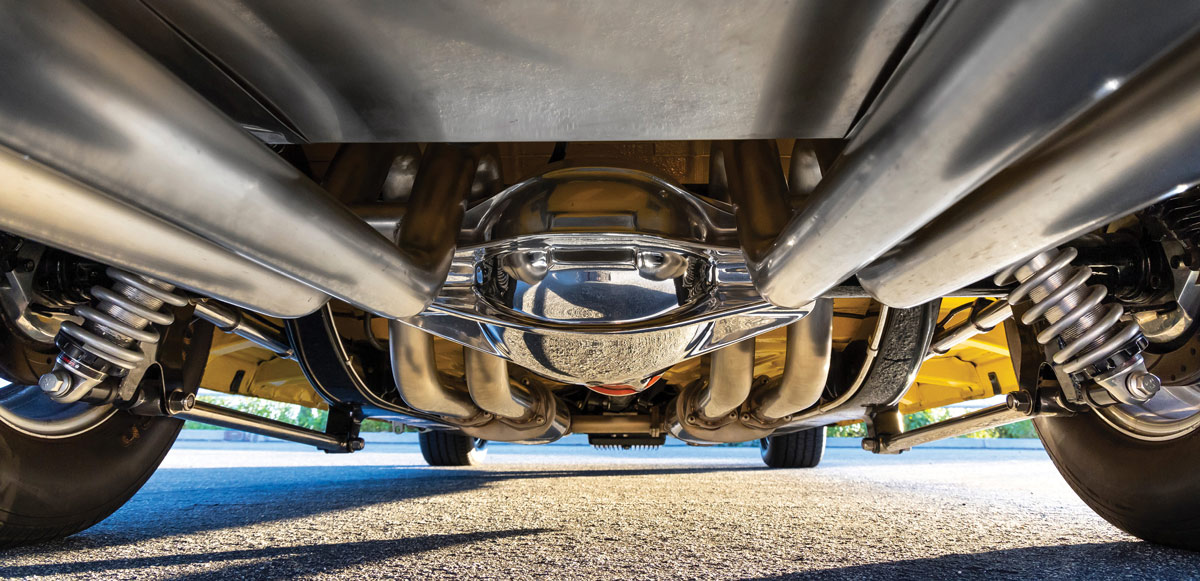

We love the story of a once-rebellious teen who lived life in the fast lane yet was able to compose himself long enough to pursue a successful career in what society during the late ’60s considered a highly acceptable profession. Tom did just that, while at the same time never losing his edge as a lifelong hot rodder. Tom will tell you he may have slowed down a little with age, but he’s proof that you can put an 8-iron in the hands of a hot rodder, but he’ll never lose grip on the passion that comes with the sound and performance of a V-8–powered, bright yellow, ’56 Chevy Bel Air.

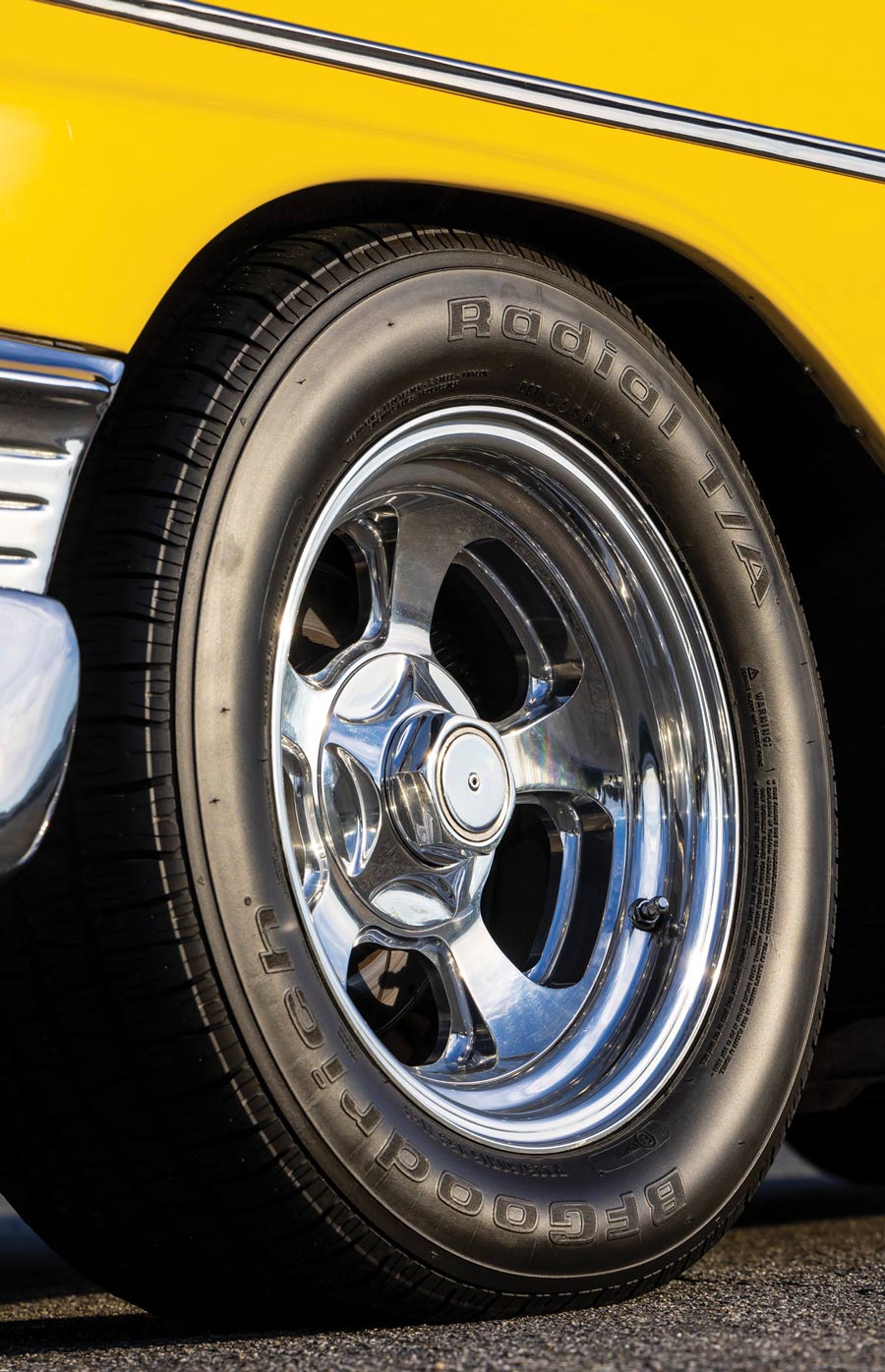


Vehicle: ’56 Chevy Bel Air
Type: Chevrolet big-block
Displacement: 460 ci
Bore: 4.280|
Stroke: 4.0 inch
Compression Ratio: 10.5:1
Drivetrain: Scat 1053 forged crank, Scat H-beam rods, CP custom forged pistons
Cylinder Heads: Edelbrock Performer RPM aluminum
Camshaft: Comp Hydraulic roller (0.604/0.607 lift, 282/288 deg. duration at 0.050)
Induction: Edelbrock Air-Gap RPM, Holley 3310 820-cfm carburetor modified by C&J Engineering (Santa Fe Springs, CA)
Assembly: John Mooreland at C&J Engineering
Exhaust: Stainless custom headers and 2½ exhaust by Frank Shonig, MagnaFlow mufflers
Ancillaries: Jim Babb custom brass-tank radiator, custom aluminum valve covers, breathers, and air filter by Frank Shonig
Output: 560 hp
Transmission: 700-R4 by Orange County Transmissions (Costa Mesa, CA)
Torque Converter: 2,500 stall
Shifter: Hurst
Rear Axle: Currie 9-inch rearend, Truetrac limited-slip differential, 3.50 gears
Chassis: Stock, modified by Alf Ebberoth
Crossmember: Custom by Alf Ebberoth
Rear Suspension: Stainless four-link suspension by Frank Shonig, Ridetech shocks, Eibach springs
Brakes: Corvette 12-inch rotors, four-piston calipers front and rear, ABS hydraulic master cylinder
Wheels: Budink Famosa custom knock-off (15×7 front, 15×8 rear)
Tires: BFGoodrich T/A; 225/60R15 front, 275/60R15 rear
Upholstery: Black German Weave carpet, custom black leather door panels, center console, seat covers
Installation: Vic Kitchen
Seats: Recaro bucket
Steering: Stock steering column, Nardi steering wheel, custom horn button by Dave Marasco
Shifter: Hurst
Dash: Custom-fabricated aluminum insert by Woody Gilmore
Instrumentation: VDO
Pedals: Custom by Dave Marasco
HVAC: Vintage Air
Stereo System: Panasonic head unit, Panasonic 5-inch speakers in kick panels, 6×9-inch rear package tray
Installation: Advantage Stereo (Brea, CA)
Bodywork and Paint: Chris Torrey
PAINT: PPG Fly Yellow
Grille: Stock
Front Bumper: One piece
Rear Bumper: One piece
Headlights: Marchal
Taillights: Stock
Plating: Sherm’s Custom Plating (Sacramento, CA)